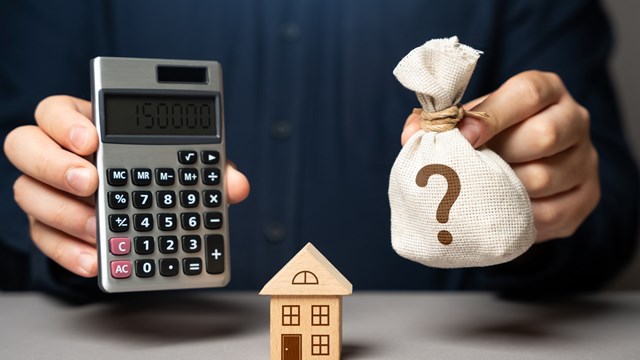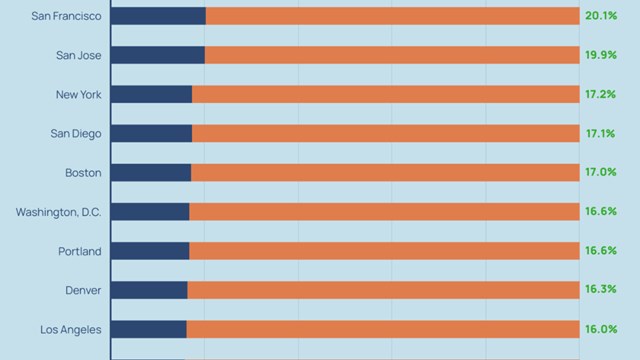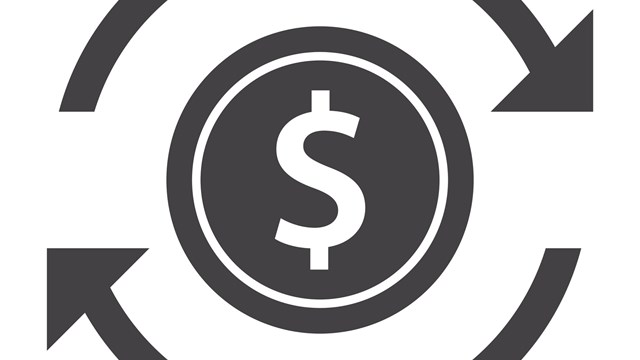As buildings age, they inevitably need repairs and capital improvements - a boiler needs replacing, the façade needs repair, or the outdated lobby can use a facelift - to name a few. For cooperative buildings with healthy reserve funds, the cost of these expenses may be covered without additional contributions from shareholders. But, when there isn't enough money in the reserve fund, shareholders may be hit with a hefty assessment to cover the cost.
In an effort to avoid the dreaded "A" word, one of the challenges for a co-op's board of directors is to try to find alternative ways to keep the reserve fund strong. One way that is increasingly popular is to require a "flip tax" - or "transfer fee" - each time an apartment is sold.
The idea of a flip tax is not new. In the early 1980's, when a lot of rental buildings were converting to co-op status, buildings needed capital improvements and there was not much money in reserve. According to Stuart Saft, a real estate attorney in Manhattan, "The feeling was tenants who bought at low insider prices and who were making quick profits by selling their apartments at market rates should give something back to the building."
Thus, the flip tax was born.
"It was basically only done in conversions," says Saft. "Then about eight or nine years ago, existing co-ops started implementing flip taxes as they were looking for new sources of income for the reserve fund."
Convincing shareholders to implement a tax that they know they will have to impose on themselves - eventually - is not an easy task for a board. But it's also not impossible.
"The best time for a board to sell the idea of flip taxes is when they are trying to do an assessment for a major capital improvement," says Saft, because it is at this point that a board can show how a flip tax would have impacted the reserve fund over a period of several years. Tom Pasquazi, executive vice president at Orsid Realty Corporation, a Manhattan managing agent, recommends a board look at sales history for the past five to 10 years.
"One of the buildings we manage did a study of sales over the past ten years and found that they would have raised just shy of $1 million, if they had a transfer fee," says Pasquazi. "It's the board's job to educate shareholders, to look at the income stream, and do comparisons between their building and similar buildings in their neighborhood."
Pasquazi says about 45 percent of the buildings that his company manages have some form of flip tax. There are generally three ways to calculate flip taxes - or "transfer fees," as they are often called. Most experts agree that the most common flip tax they see is an amount equal to two to three percent of the sale price.
"This is probably the most fair method," says Pasquazi, "because it adjusts for economic conditions."
Other buildings use a flat price per share to calculate the flip tax. Orsid sees a wide range of per-share prices ranging from $1 per share to $33 per share, but it is difficult to compare per-share amounts, since all buildings have a different number of shares outstanding.
A per share calculation "will always give the same amount to the building regardless of the sale price," says Pasquazi.
A third way to calculate flip tax is based on profit. Some buildings base the calculations on gross profit, while others allow for deductions for legal expenses, capital improvements done in the apartment, and broker fees. This can be difficult to calculate, and shareholders need to keep diligent records to documents their deductible expenses. This form of flip tax can produce dramatic differences in the amounts paid by shareholders upon selling their apartments. A shareholder who bought in at conversion and sells after many years may pay far more than someone who just recently bought in an up market and sold in a down market.
Less common ways of calculating flip taxes are to have a flat fee for all apartments, regardless of sale price or number of shares, or a method using a combination of calculations, for example, one building surveyed has a transfer fee equal to "the greater amount of $5 per share or 1 percent of gross sale price."
|Where do Flip Tax Revenues Go?
General opinion among pros seems to be that flip tax money should go into the reserve fund to form a cushion for future capital expenditures. That's because flip tax income is unpredictable, and therefore difficult to budget. Market conditions and the size of apartments sold will affect the amount of tax paid.
"It's the luck of the draw," says Pasquazi. "The sale of a large penthouse apartment may generate a big tax. Another year, a building may only have a few studios sell, which [in turn] will generate a much smaller tax."
By taking the income into operating funds, buildings may be masking and compounding problems for the following year. For example, if a building needs a five percent increase in maintenance to cover operating expenses, but is able to cover the amount with flip taxes, next year they may have to raise maintenance 10 percent because there isn't enough flip tax.
Income vs. Bad Income
Co-ops with significant amounts of non-shareholder income are probably well aware of Section 216 of the Internal Revenue Code, which contains provisions related to the 80/20 rule, and mandates that in order for buildings to deduct mortgage interest and real estate taxes on their Federal tax returns, no more than 20 percent of a co-op's annual income can come from non-shareholder sources such as retail tenants. According to Gerald Marsden, a CPA with the firm of Eisner & Lubin in Manhattan, a flip tax is considered good income under the 80/20 rule if it is put into the operating fund. If funds go into the reserve fund, they are considered income neutral under the 80/20 rule and therefore have no effect on that calculation.
"The 80/20 rule is a very important component especially in New York City when outside income exceeds 20 percent, co-ops have a problem," says Marsden, adding that buildings are constantly trying to find ways to comply with the rule.
The effect of flip taxes on the 80/20 calculation can be dramatic. A flip tax of $100,000 can mean an additional $25,000 of retail income can qualify.
Saft cautions that if buildings use flip taxes to meet 80/20 compliance issues, they will have to deal with the problem every year.
When viewed with the alternative ways of raising capital, flip taxes may be the most palatable and least painful for the majority of shareholders, especially those shareholders who plan to stay in the building long term, say, six to 10 years.
"For a mid-size building with 80 or 90 apartments, assessing for a $1 million capital project is a big amount, but if the reserve fund is built up over time, they may not need to make an assessment," says Pasquazi.
Aside from assessments, another way to pay for capital expenses is to increase the building's borrowing but this will add to the monthly operating cost and may trigger a maintenance increase, which most shareholders want to avoid.
Flip taxes are fairly common in Manhattan co-ops and likely do not have a negative effect on market values. In fact, Saft says the consensus is that apartments sell better in buildings with flip taxes, "because the buyer sees that he may not be hit with assessments for capital improvements later on. It becomes a marketing tool."
It is important though that all parties are aware of the flip tax before they go to contract. Marsden recommends that as soon as a shareholder comes to the board for permission to sell, he should be reminded about the flip tax.
Under section 501c of the Business Corporation Law (BCL), in order for a flip tax to be legally enforceable the proprietary lease must be amended - unless the flip tax is stated in the original organizational documents. An amendment to the proprietary lease typically requires a favorable vote by two thirds of the outstanding shares and some buildings may have even more stringent requirements. Instituting a flip tax is more complicated than simply penciling an additional clause into the building's governing documents. To make sure everything's done right to best serve the co-op community into perpetuity, boards need to enlist the sound advice of their legal counsel when considering the implementation of a new flip tax. All potential hurdles aside, however, once the votes are taken and the paperwork settled, flip taxes can often be a practical, relatively painless way to beef up a building's reserve fund without gouging shareholders for extra maintenance or running into 80/20-related tax penalties.







Leave a Comment